Phra Chulachomaklao Fortress, Naval Museum/Android 2.2 Froyo Is Here!

|
• Barali Beach Resort • Bhumiyama Beach Resort • Chang Buri Resort & Spa • Chang Park Resort & Spa |
I have some unfortunate news to report on this project and total 100% transparency is how I feel this should be handled. My planned beneficiaries of this project, innocent very much in need children at a certain orphanage, have fallen victim to their local manager who we have found cannot currently be trusted and I doubt this is likely to change. Decisions need to be made if we're going to carry this project forward and if so who the new beneficiaries will be. I do expect this project to generate significant revenue so I take it very seriously. As you read this I'll be back in the Mae Sot area investigating further. I'll keep you informed. For now I'll still collect images with the intention of making the best most meaningful mosaics possible and as always, I'm asking for and will greatly appreciate your help with the images.
We are still accepting (and pleading for) images of children from SEA. No matter how terrible you think
they are, please send them in anyway. These images will be used to complete a set of 3 high quality mosaics which will be sold to benefit the Karen and Burmese Orphans living in the orphanages and refugee camps. The more images the better, I can
use all you have. Please take the time to go through your images for anything you think might help. If you missed the "No Place to Call Home" special, you can
click on the link and read more about this. Thank you! info@BangkokImages.com
Quick Click Links
Feature Photograph
Phra Chulachomklao Fortress, A Naval Museum Android 2.2 Froyo Is Here!
Photography News of Interest
Readers Submissions
Readers Questions A Snapshot of Bangkok Images Week in Review
Infocus Blog, The Beginning And The End..T
Feature Photograph *menu
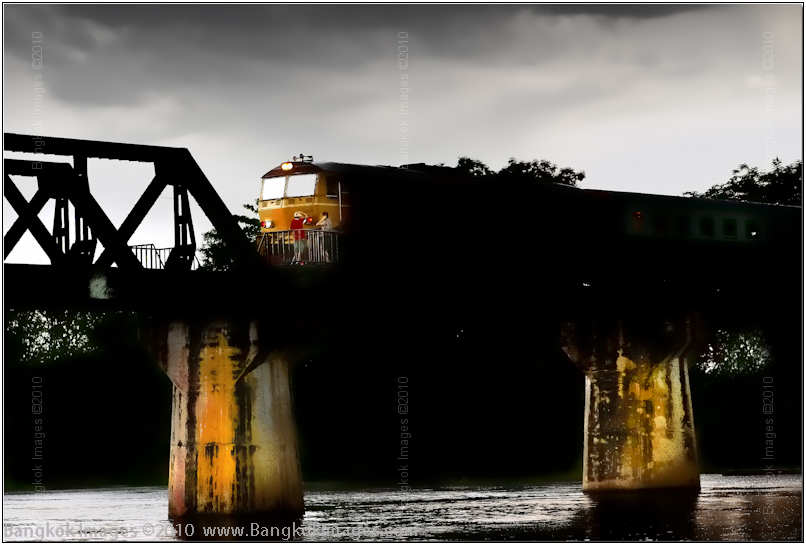
Canon 1ds Mark II, 70-200mm F2.8L IS @F4 1/200th 95mm ISO 800 ISO 800
One of the best photographers I know has impressed me for years with the way he uses light to achieve a style/look I consider unequaled in his field. We’ve bantered back and forth about photography, politics, and religion.. the three areas best left to discussion between family members or really good friends. We often share some of our latest work or even an old favorite. There was something about his style/look that I couldn’t quite put a finger on, yet for years I tried to figure it out.
Finally I just asked, and he told me. In effect what he was doing was exposing different parts of the scene for the best look just for those parts, and then blending the images together in layers to create the final image. Through the manipulation of exposure he could highlight the important parts on the subject, lines/curves/shape, while subduing extraneous detail which tended to distract. Properly practiced this technique can make a photograph really POP without being apparent to the viewer why it pops.
Just because you know how someone does something, doesn’t mean you can do it yourself. Our styles and subjects are very different, yet the technique and ‘look’ would surely be useful to me. Often, with such work, the difference is in the subtleties, or perhaps more accurately.. what isn’t there more than what is there. I practiced, I tried to find a way to apply his highly successful look, but I never felt I was putting the right pieces together. Until this photo.
An old diesel locomotive powers across The Bridge Over River Kwai at sunset with two tourists awed by its presence. What I saw in my mind was simple, the sunset, the bridge, the locomotive, and two tourists in awe. What was exposed in my camera was far different, way too much detail distracting from the shot. Having bracketed the shot I noticed each exposure value either hid or accentuated detail on certain parts of the shot. Now the idea was flowing in my mind, and soon Photoshop was flowing on my monitors. The result is this week’s feature photograph.
This photograph is significant because I was able to see and draw from the most subtle part of someone else’s style, and bring it into my own style, and the image was better for it. I feel it was successful. Sure, I have a long way to go with this particular technique, but I’m happy with this modest start. No, it’s not how Craig would have captured or processed this image, but I can’t help but feel there is at least a tiny piece of him in the image. A small part of the essence of his technique intermingling with mine.
Really, this is how we form our individual styles. Over the course of years.. and often longer.. we see and learn tiny pieces of technique and style.. and then put them together with what’s inside us. The result, if real, is a new style unlike anyone else’s style. Someone told me a few years back “I could tell it was your image by the way it looked.” Thank you! It was then I knew that finally, after many years of work, I was starting to develop a style of my own. A signature style.
Not everyone will love it, perhaps not care for it at all, but it will be yours. And often the most controversial style becomes the most famous, the most sought after, the most viewed. Bad or good, if someone can look at your work and immediately associate it with you, and no one else, then you’ve developed your own style. You’re now ready to snatch the pebble from the old priest's hand and leave the temple.
Craig Lamson is a guest writer on www.BangkokImages.com. Check out his interview and some of his work here , and some of his reviews here, and here, and here
. Here too!
Phra Chulachomklao Fortress, Naval Museum *menu
This is one of those low key destinations perfect for a family outing when you don’t want to drive too far, encounter too much traffic, deal with large crowds, and you just want a fun relaxing outing. If this sounds like something you’re interested in then Phra Chulachomklao Fortress is probably just the ticket for your Saturday afternoon. And if you have kids that would enjoy crawling around an old frigate museum ship then perfect!
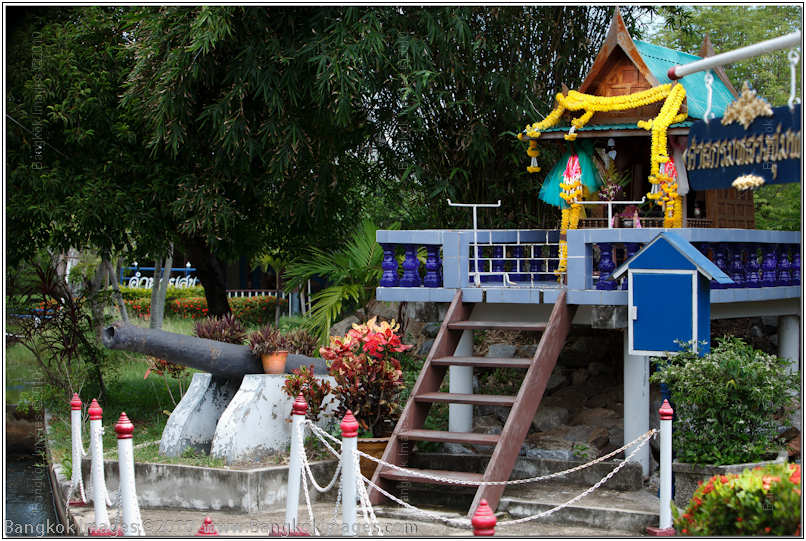
Canon 5d Mark II, 70-200mm F2.8L IS @F5.6 1/100th 70mm ISO 100
One of the first sights you’ll encounter is this shrine set up to honor an admiral. You don’t often see 3” cannons to ward off evil spirits and it seems more than a bit out of place, yet it lens a flavor you don’t often see.
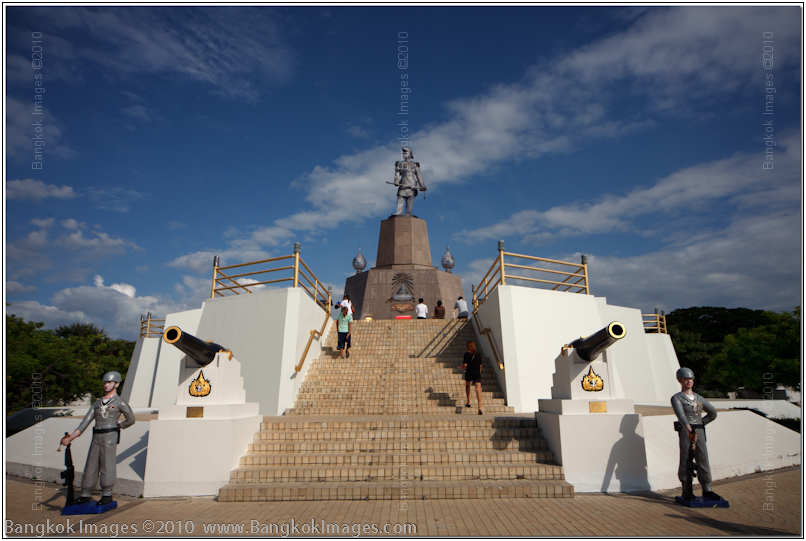
Canon 5d Mark II, Sigma 12-24mm F4 @F8 1/800th 24mm ISO 100
This monument to a past king was interesting in that it didn’t even warrant live sailors, but instead was manned by plastic dummies. It became immediately apparent the Thai’s do military monuments differently than in the west.
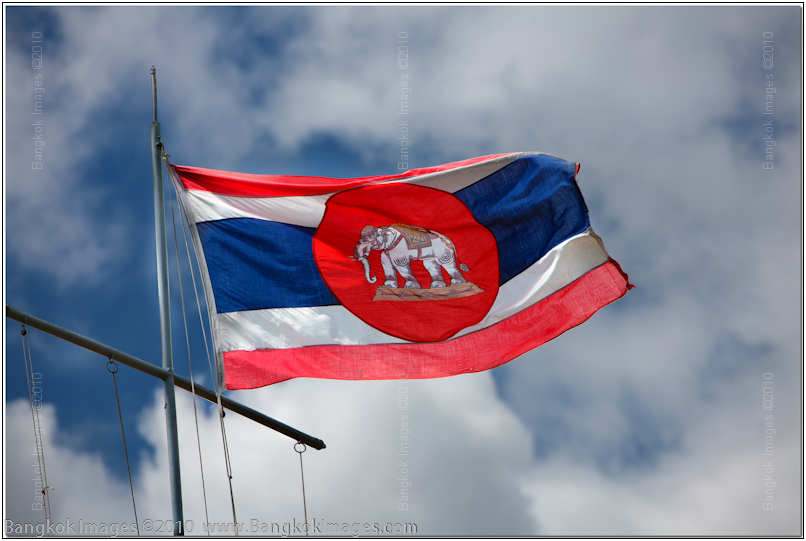
Canon 5d Mark II, 70-200mm F2.8L IS @F5.6 1/1000th 195mm ISO 100
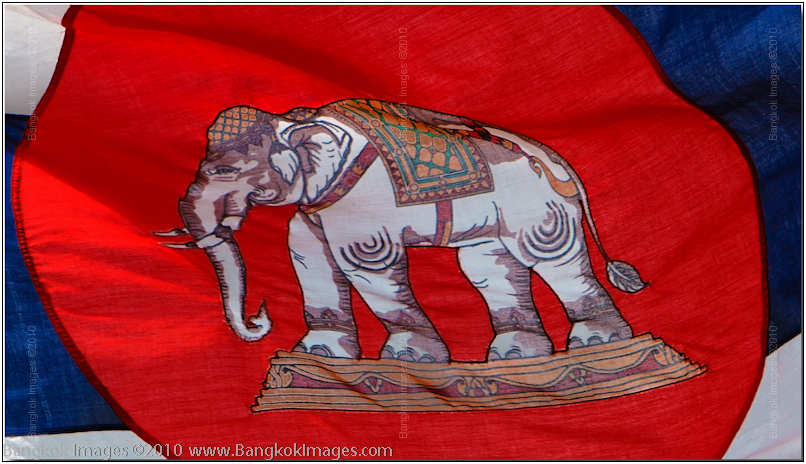
Canon 5d Mark II, 70-200mm F2.8L IS @F5.6 1/1000th 195mm ISO 100
This was one of my favorite images from the entire day. A Royal Navy Flag used since 1917. A bit worse for wear, but still colorful and you can clearly see the elephant ready for war. Looking at it, I think I’ll add a close crop of the elephant below.
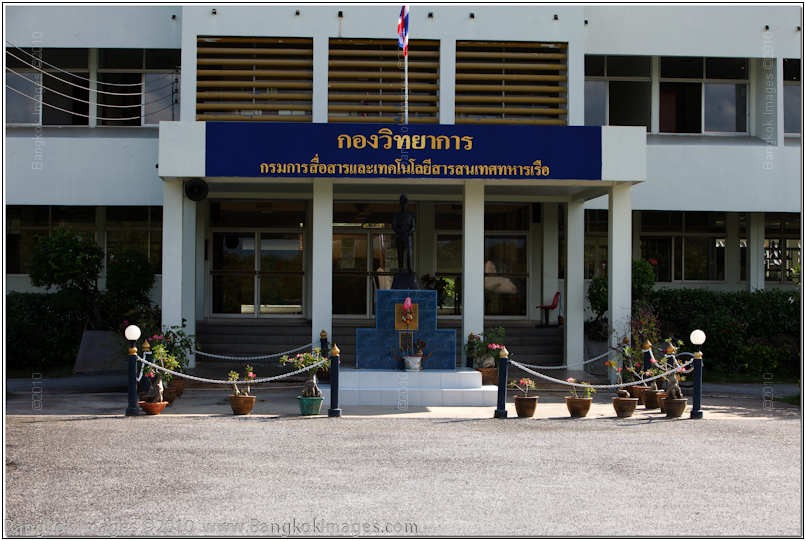
Canon 5d Mark II, 70-200mm F2.8L IS @F8 1/80th 78mm ISO 100
Every base has a communications building and this is Fortress Phra Chulachomkloa’s.
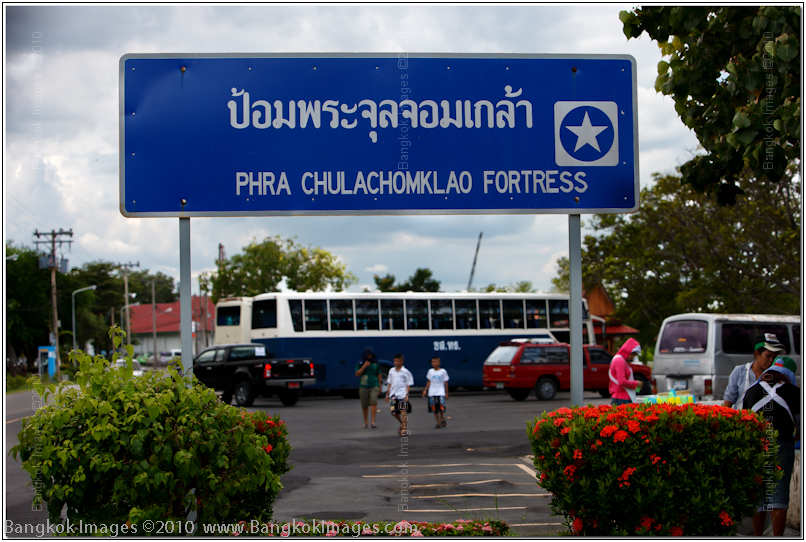
Canon 5d Mark II, 70-200mm F2.8L IS @F5.6 1/500th 70mm ISO 100
The parking lot is located right in the middle of the complex, no long walks, a quite peace and relaxed feeling.
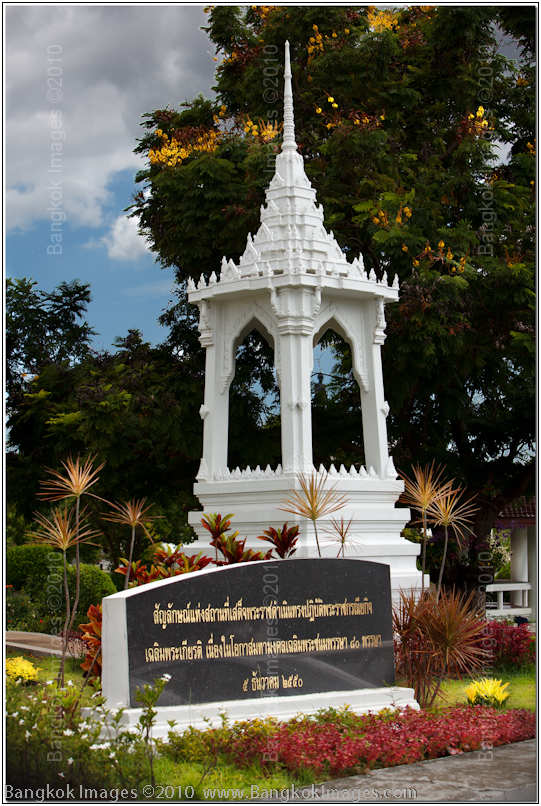
Canon 5d Mark II, 70-200mm F2.8L IS @F5.6 1/400th 70mm ISO 100
Overall the base was in disrepair and not the showcase you’d expect from a public military exhibit, yet if you isolated certain parts of the scene some areas were very nice. I liked the yellow flowers in the trees and the selection of plants in this scene.
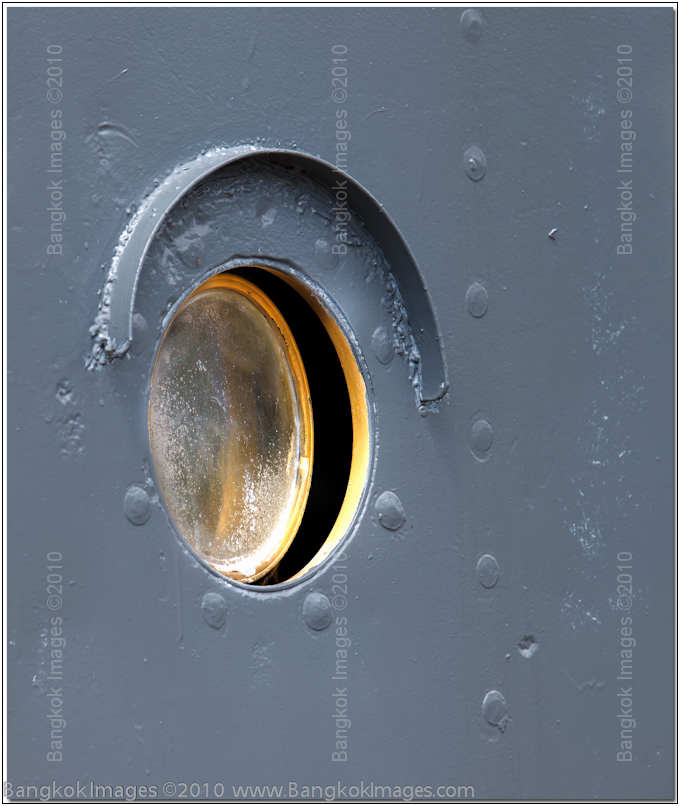
Canon 5d Mark II, 70-200mm F2.8L IS @F5.6 1/320th 175mm ISO 100
This is perhaps my favorite picture of them all. Navy men will immediately realize the uniqueness of a porthole on a warship, and how far back it dates the ship. In this case 1937. Navy ships are always air conditioned, at least for the last 60-70 years and portholes are places water can breach the hull. Portholes and warships just don’t mix.. except in some unique antique ships still pulling museum duty.
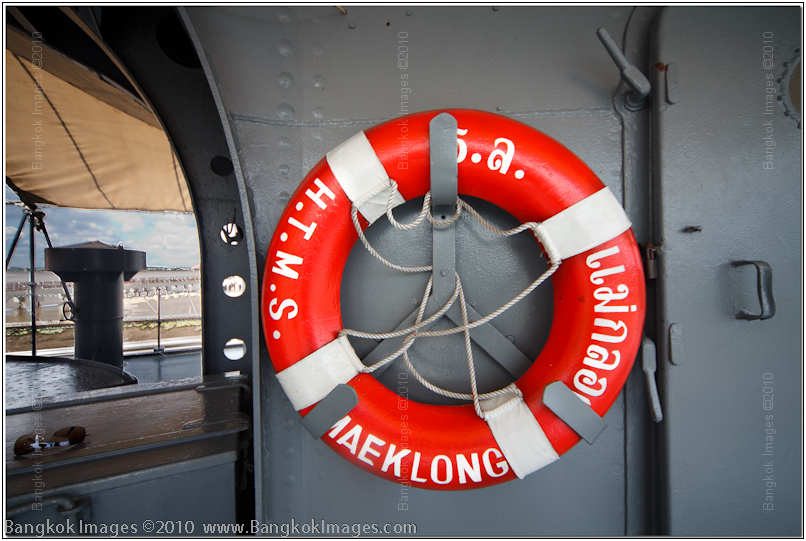
Canon 5d Mark II, Sigma 12-24mm F4 @F5.6 1/80th 16mm ISO 100
These old style donut life preservers seem more at home at a community pool than a warship and it made me smile, and at the same time providing an interesting opportunity for a fun composition. Balancing the light to the left and on the life preserver was a challenge.
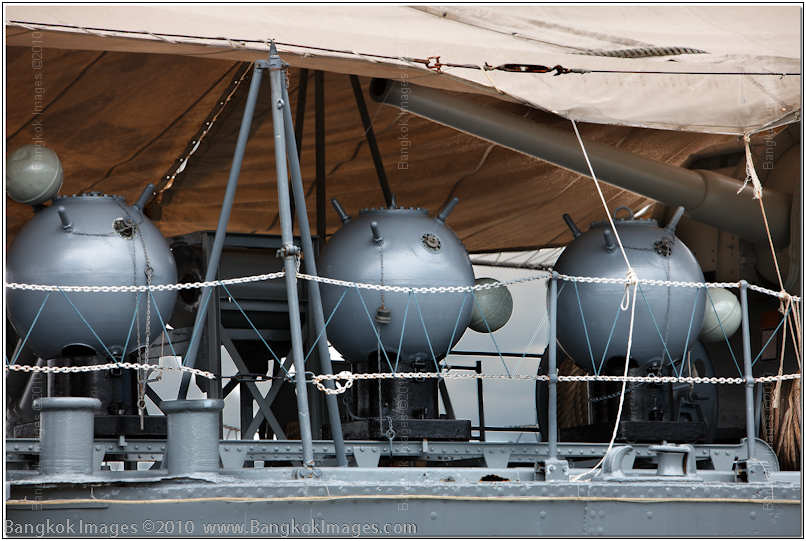
Canon 5d Mark II, 70-200mm F2.8L IS @F5.6 1/200th 173mm ISO 100
Anti-ship minds are nasty business and believe it or not, old style mines like these Danish built specials are still turning up at the worst time in the worst places. Notice the attached lighter colored “float?” They’re hollow metal and have a hole in the top. The mine sinks down 3-4 meters where it will do maximum damage to the ships hull under the waterline (depth is adjustable), and the float stays visible just long enough for the battle group to clear the area without hitting one. Meanwhile the float fills slowly with water and finally sinks making the mine totally invisible to an unsuspecting merchant ship. Yes, civilian merchant marine ships were their primary targets. They ordinance mate would attach and set the fuse, and then roll them along the tracks off the fantail falling in the water behind the ship in its wake. They could drop up to 24 of these in quick order.
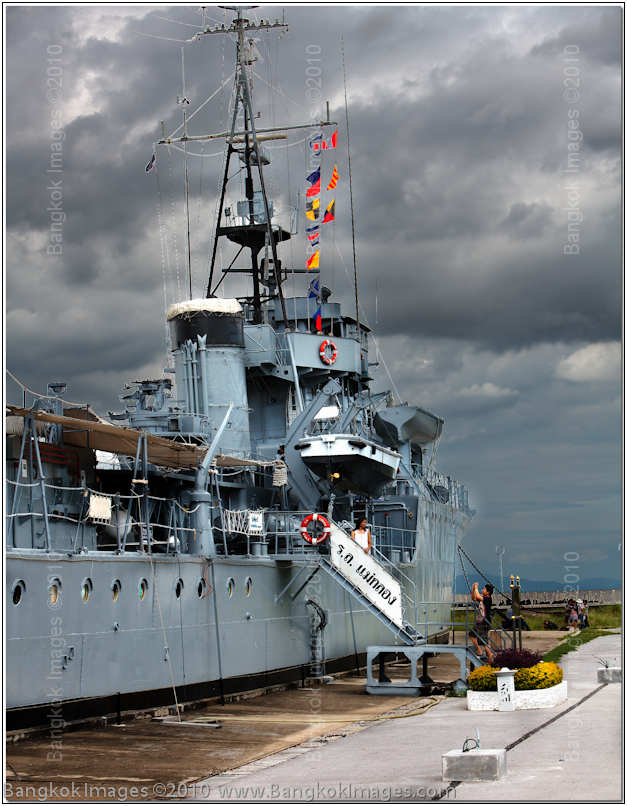
Canon 5d Mark II, 70-200mm F2.8L IS @F5.6 1/500th 70mm ISO 100
When airplanes started being used in conjunction with Naval operations the pilots quickly realized white ships were very easy to see. Most modern navy’s, including the USA’s “Great White Fleet” which once gathered docked in San Franciso’s Bay and became a great scene for local artists (late 1929ish), immediately began painting their ships a certain shade of grey dubbed ‘Navy Grey’ to help a ship remain unspotted by spotter planes. Some rather large notable Navy’s run white ships today. The last I heard they were going to share their ships with the French so maybe they’ve finally realized it didn’t work out that well.
Most museum ships actually sit in water. Others are placed on platforms so you can see their entire hull, screws, and rudder. This Thai war ship looks like they dug a big hole and dropped it in the hole because it was the most economical alternative.
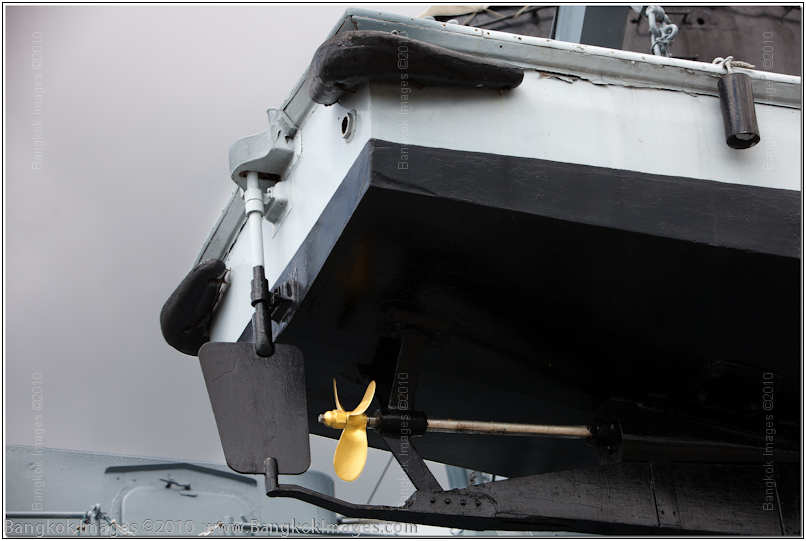
Canon 5d Mark II, 70-200mm F2.8L IS @F5.6 1/250th 105mm ISO 100
This ship was manned by 170 sailors. It appears to only have two lifeboats capable of holding 24 men each, and that would be very tight. The math just doesn’t add up. And the davits holding it so high weren’t the type that lent themselves to rapid deployment. Notice the gold painted screw? Museum ships must make decisions based on economics. Most western museum ships live on the water near a pier, not dropped in a hole. Their brass/bronze screws are hand shined daily to a high gleam along with the rest of the ships brightwork. Here, they appear to be painted once a year or so and that’s good enough.
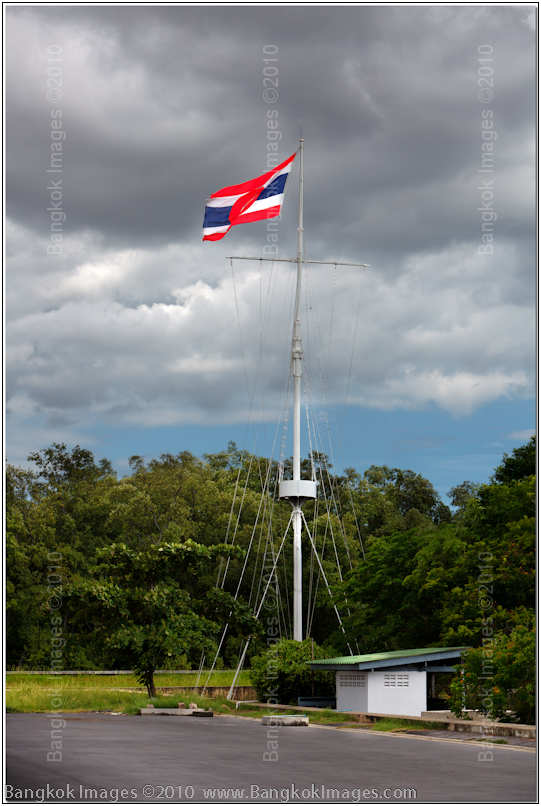
Canon 5d Mark II, 70-200mm F2.8L IS @F5.6 1/1000th 80mm ISO 100
Another Siam flag flies off a ships mast planted in another hole. I love the flag, and the mast, but it just doesn’t fit planted in the grass.
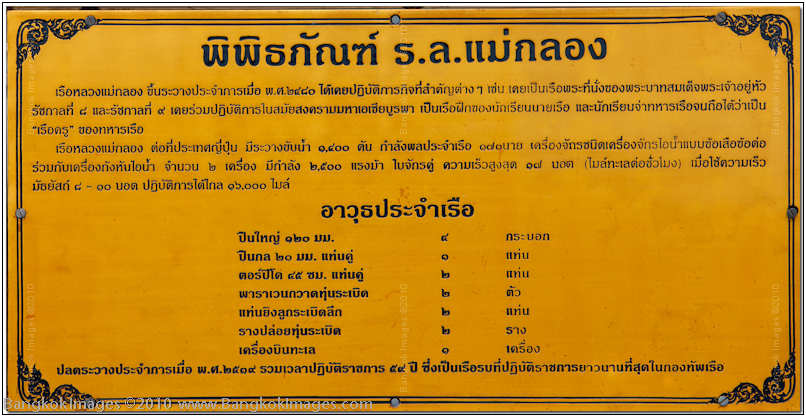
Canon 5d Mark II, 70-200mm F2.8L IS @F5.6 1/500th 140mm ISO 100
A painted brass plaque with the ship's information.
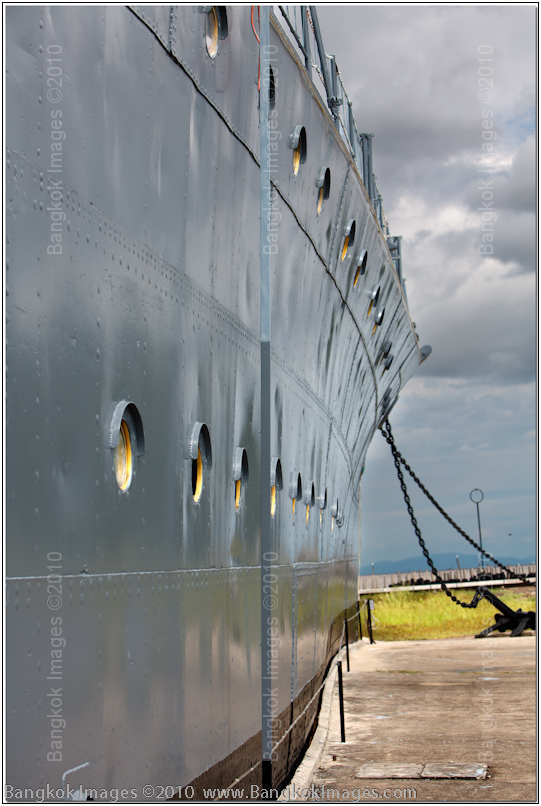
Canon 5d Mark II, 70-200mm F2.8L IS @F5.6 1/640th 70mm ISO 100
The rows of portholes, imagine the heat inside this metal tin can at sea in the local waters. The men must have been miserable. Now consider, these were officer berths. The enlisted men didn’t even rate a porthole.
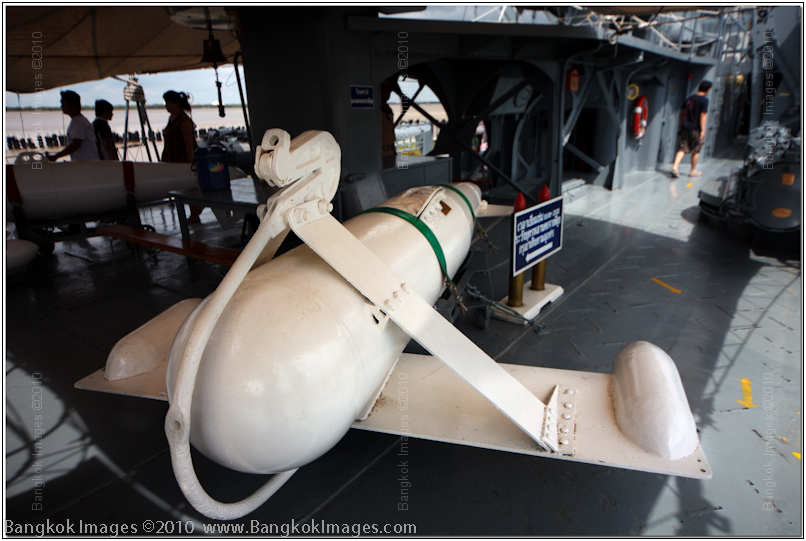
Canon 5d Mark II, Sigma 12-24mm F4 @F5.6 1/320th 24mm ISO 100
A surface torpedo. Heavy, a massive load of explosives, but painted just the right color for high visibility. Perhaps they used them at night?
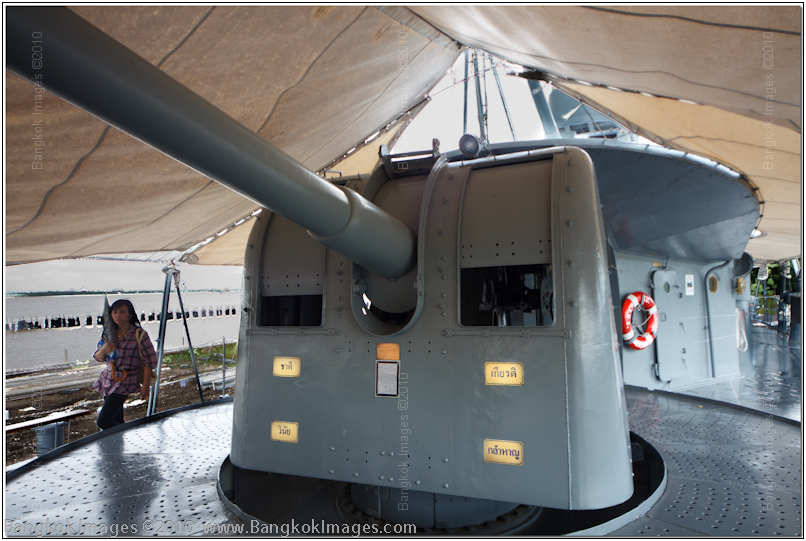
Canon 5d Mark II, Sigma 12-24mm F4 @F5.6 1/30th 25mm ISO 100
The aft turret with an approximate 3-4inch gun. These were to support shore landings and possibly fire other ships. These were not anti-aircraft, which during this era wasn’t the threat it was later on. The brass plaques say “honor, courage, bravery…”
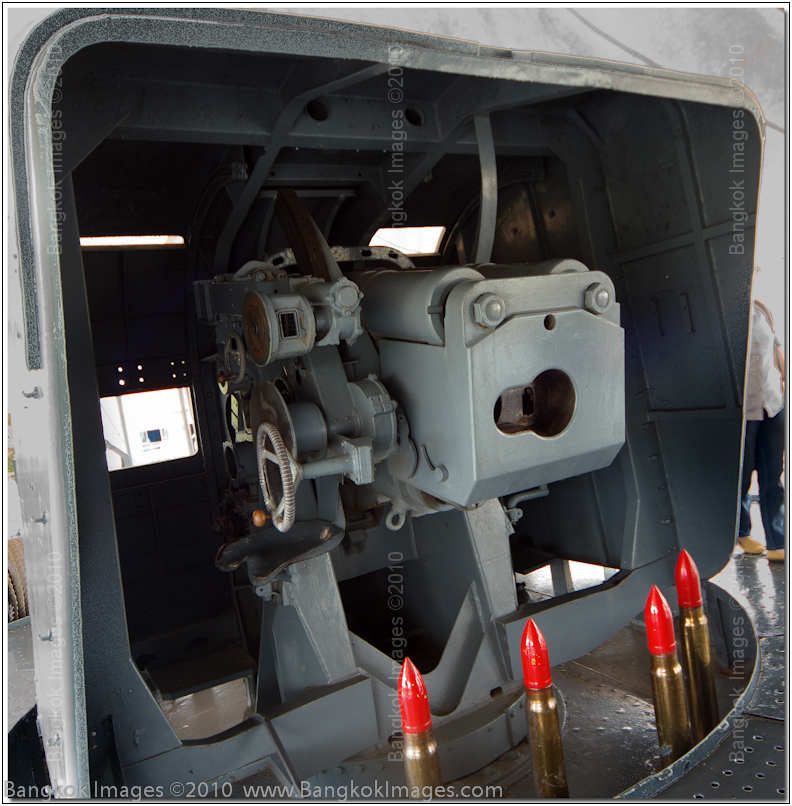
Canon 5d Mark II, Sigma 12-24mm F4 @F5.6 1/25th 17mm ISO 800
The other side of the gun. You can see the metal seat where the spotter would set and call the range to the other men who would dial in the elevation and windage, meanwhile two other men would be standing by to break open the breech, pull the expended shell, and reload. In all, 5-8 men would man this single gun, all exposed to incoming fire.

Canon 5d Mark II, Sigma 12-24mm F4 @F5.6 1/20th 12mm ISO 100
Another view of the same gun with the barrel looming and the turret area cleared all around.
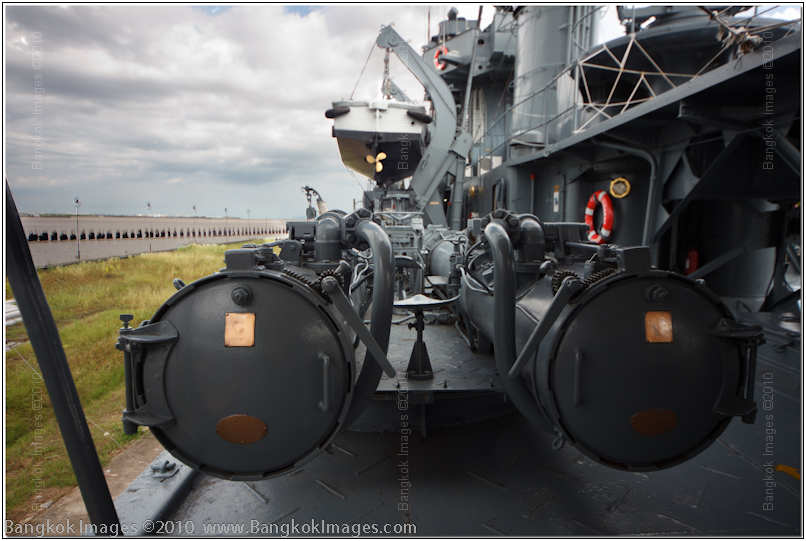
Canon 5d Mark II, Sigma 12-24mm F4 @F5.6 1/80th 24mm ISO 100
Torpedo tubes, probably added later in this ships life during a refit. The torpedo’s could be loaded from the rear you can see here, then the entire mechanism pivots 90 degrees and the torpedo’s are fired off the side of the ship. This means the attacking ship has to present it’s broadside to the enemy. Later they improved on this design.
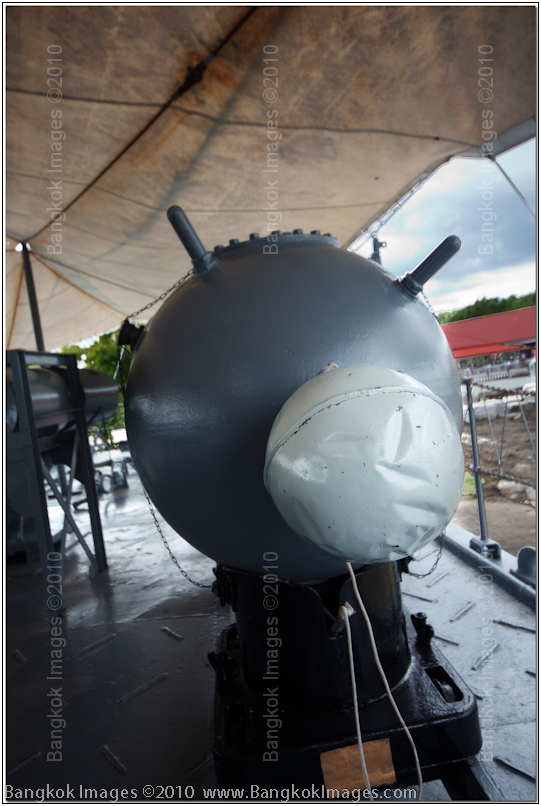
Canon 5d Mark II, Sigma 12-24mm F4 @F5.6 1/50th 24mm ISO 100
Another closer look at the Danish built anti-ship mines.
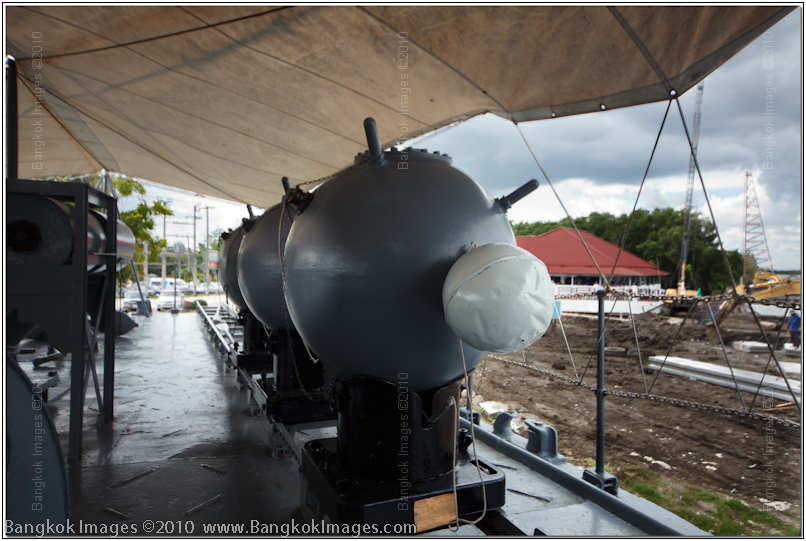
Canon 5d Mark II, Sigma 12-24mm F4 @F5.6 1/80th 24mm ISO 100
Here you can see them lined up on the tracks, ballast attached, ready to be rolled over the fantail to wreck havoc on the poor unarmed merchant ships steaming through internationally recognized shipping lanes.
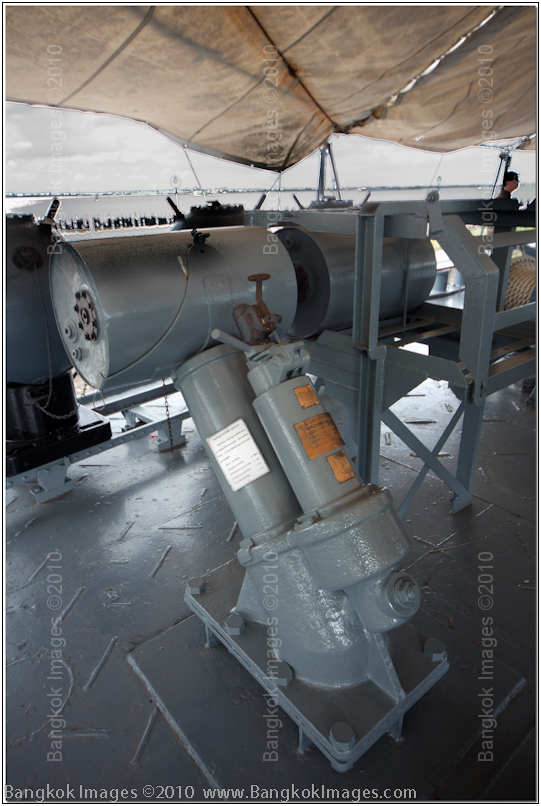
Canon 5d Mark II, Sigma 12-24mm F4 @F5.6 1/30th 24mm ISO 100
And of course submarines were a threat, constantly on guard with their primary duty being to protect the merchant ships carrying vital war supplies. The submarines would lay off the lanes waiting for a surface warship to make their presence known. The only real defense this era of surface warship had were depth charges. The fuses would be set for a certain depth the captain would call, and the hydraulic mechanism would toss them over the side where they’d quickly sink at a consistently rate before exploding at predetermined depths. Crews would stand around the charts counting the seconds until explosions were felt, hanging on to keep balance as the force was enough to severely rock their own ship.
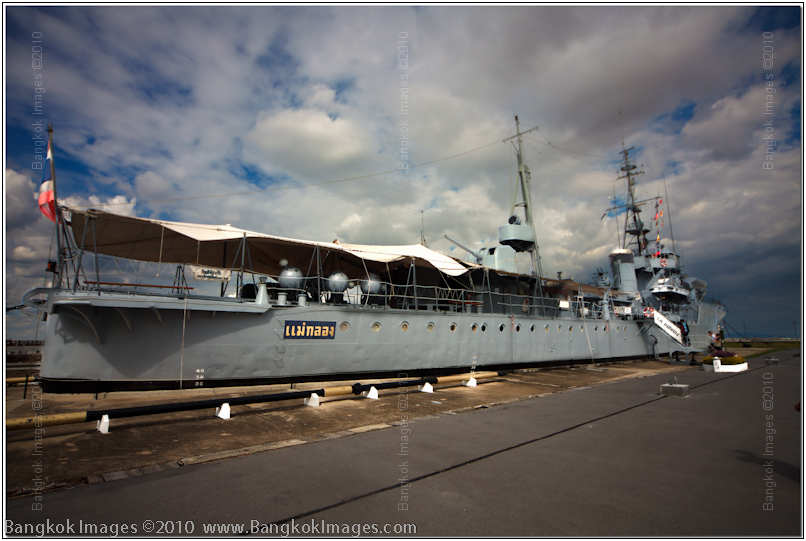
Canon 5d Mark II, Sigma 12-24mm F4 @F5.6 1/1000th 19mm ISO 100
Here’s a full view of her. You can see the rear gun hidden under the white tarp, another gun above it, the mines ready to roll, portholes hopefully dogged shut, coal boilers stoked for maximum speed, all on a hull where the keel could easily be split in half by even a small charge.
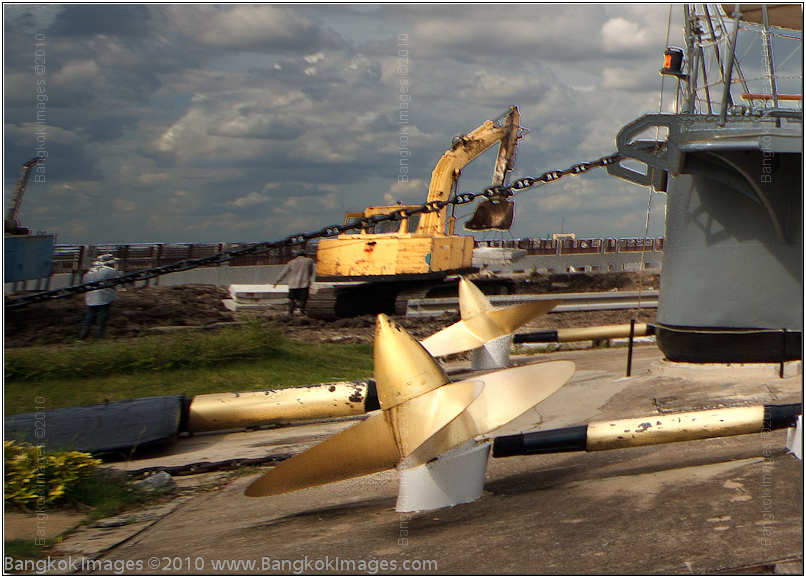
Canon 5d Mark II, Sigma 12-24mm F4 @F5.6 1/1000th 15mm ISO 100
When you castrate a proud naval vessel by dropping it in a hole in the ground, I suppose the least you can do is display it’s severed screws and shafts on the ground beside it.
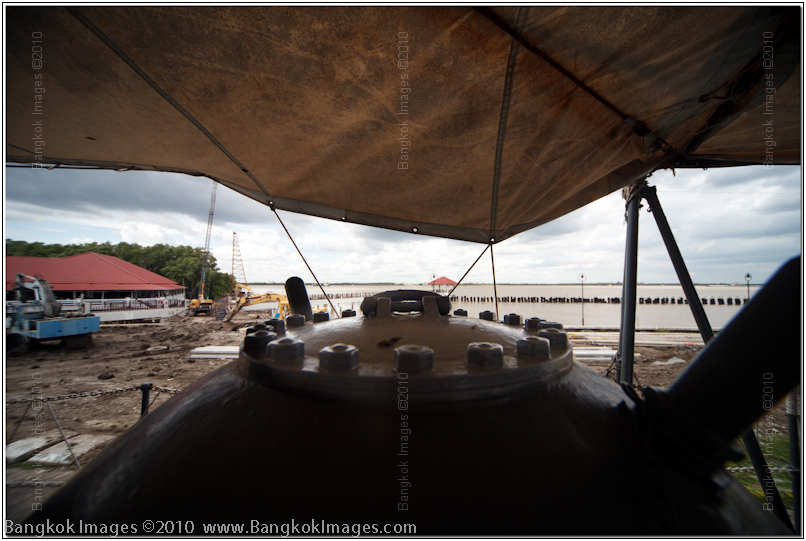
Canon 5d Mark II, Sigma 12-24mm F4 @F5.6 1/160th 12mm ISO 100
I watched my assistant trying to balance this shot, the bright skyline with the darkened area under the canopy. Really, I was surprised with how well she did.
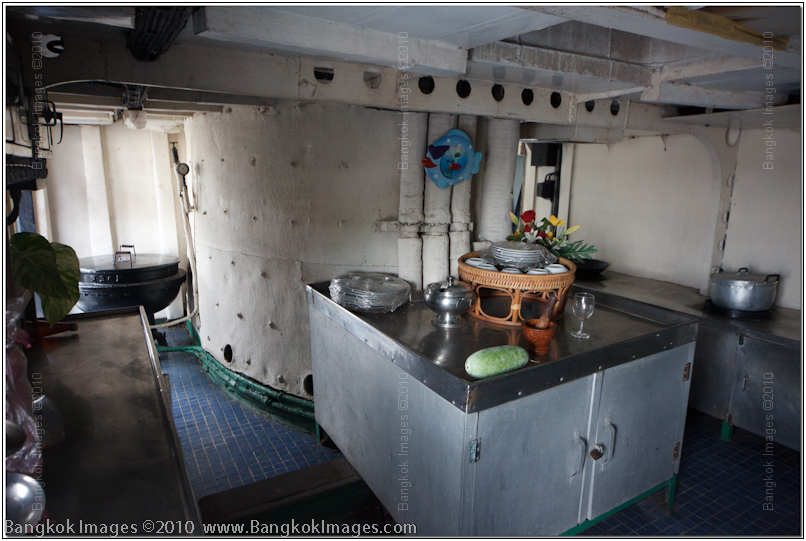
Canon 5d Mark II, Sigma 12-24mm F4 @F5.6 1/50th 24mm ISO 3200
The galley in a 1930’s era warship is simplistic in nature, nothing like her western counterparts. See the big black “kettle” in the upper left? That’s the rice cooker.
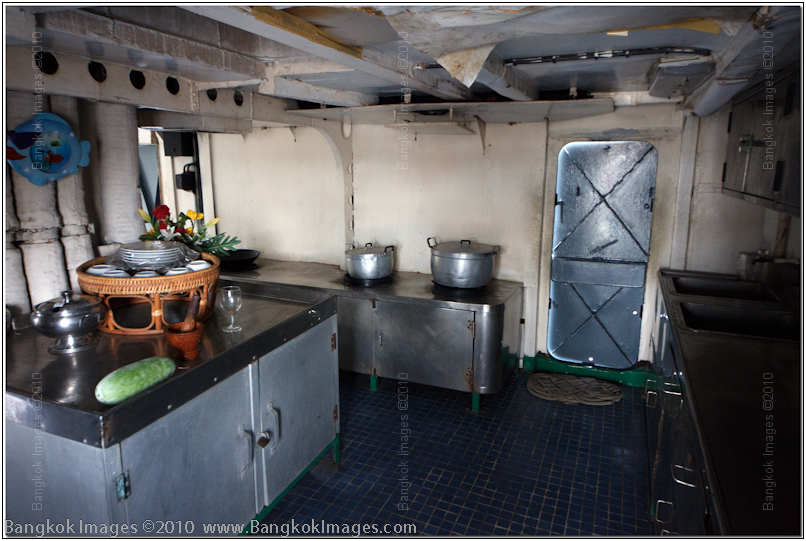
Canon 5d Mark II, Sigma 12-24mm F4 @F5.6 1/50th 24mm ISO 3200
As you’ll notice from the exfil, we went from ISO 100 outside, to ISO 3200 inside. Another view of the galley showing the stove tops where soups were made.
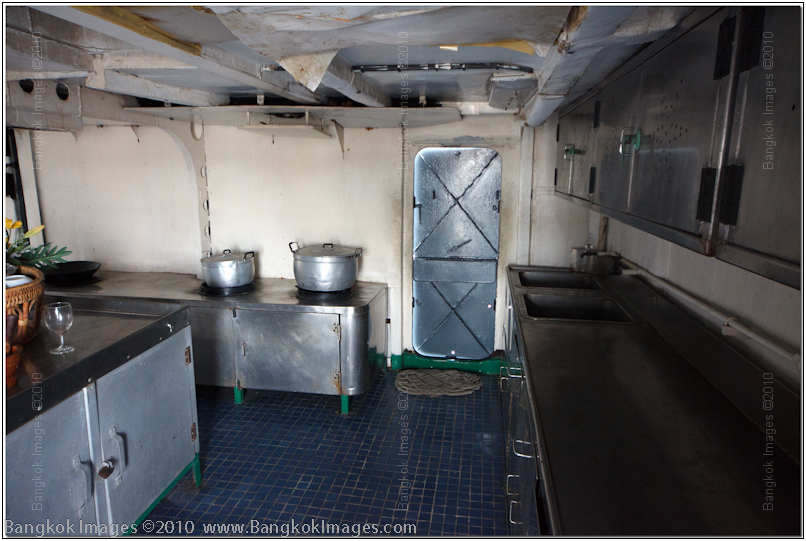
Canon 5d Mark II, Sigma 12-24mm F4 @F5.6 1/30th 24mm ISO 3200
Here, you can see along the right side the “scullery” where dishes and pots and pans were cleaned.
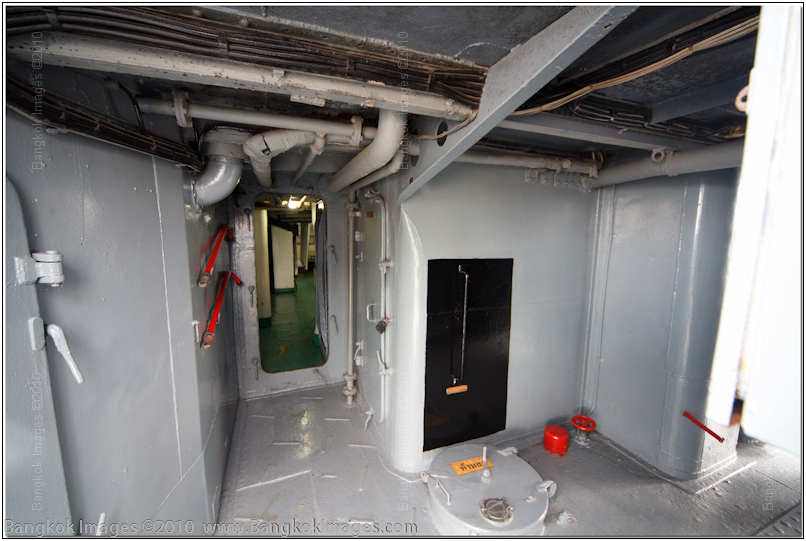
Canon 5d Mark II, Sigma 12-24mm F4 @F5.6 1/80th 15mm ISO 3200
As you walk in from the lower deck you can see the green floor where the officer berthing areas are.
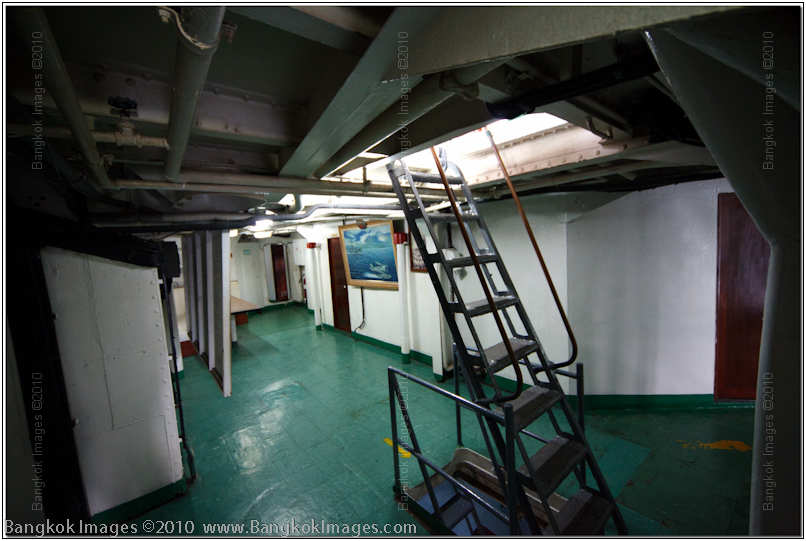
Canon 5d Mark II, Sigma 12-24mm F4 @F5.6 1/25th 15mm ISO 3200
This would be the forward mess area, where the crew would cram in 100 at a time for inspection out of the weather, and to be briefed on missions. The ladder leads to the upper deck, and the steel bulkheads hold maps, charts, and dogged hatches.
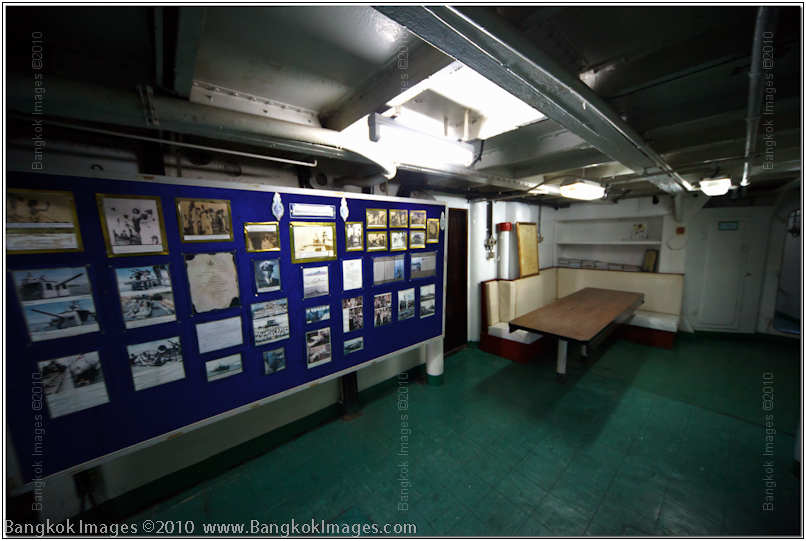
Canon 5d Mark II, Sigma 12-24mm F4 @F5.6 1/60th 16mm ISO 3200
Once quarters were over the offers would probably gather at this table for tea and show.
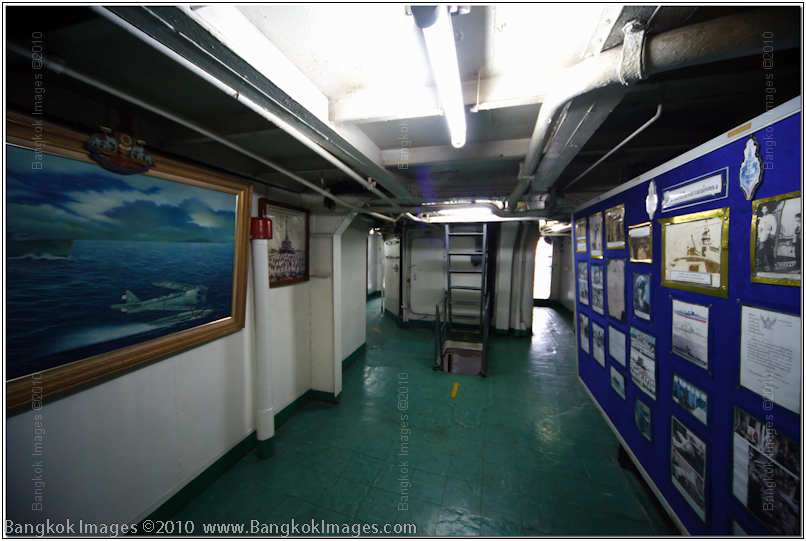
Canon 5d Mark II, Sigma 12-24mm F4 @F5.6 1/50th 12mm ISO 3200
I could almost think this was the quarterdeck and not the officers mess, but once a ship has been decommissioned and ‘decorated’ it’s hard to tell.
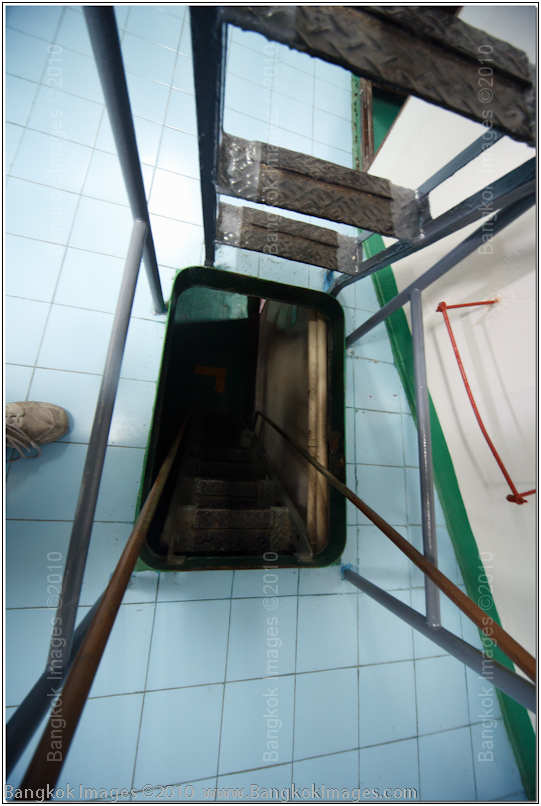
Canon 5d Mark II, Sigma 12-24mm F4 @F5.6 1/4th 12mm ISO 3200
Down this ladder were the enlisted crews quarters, nothing more than 100 hammocks strung wherever, other such spaces were ammo bunkers.
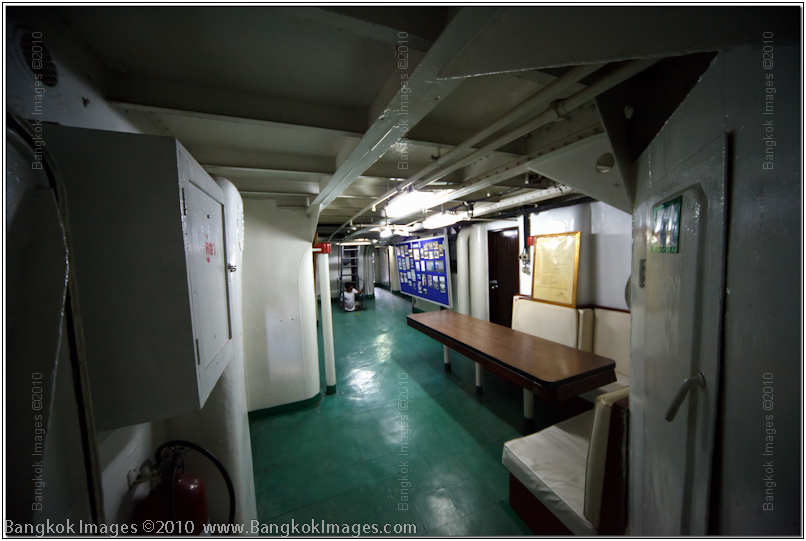
Canon 5d Mark II, Sigma 12-24mm F4 @F5.6 1/80th 12mm ISO 3200
You can picture a crew member coming up from the berthing area below.
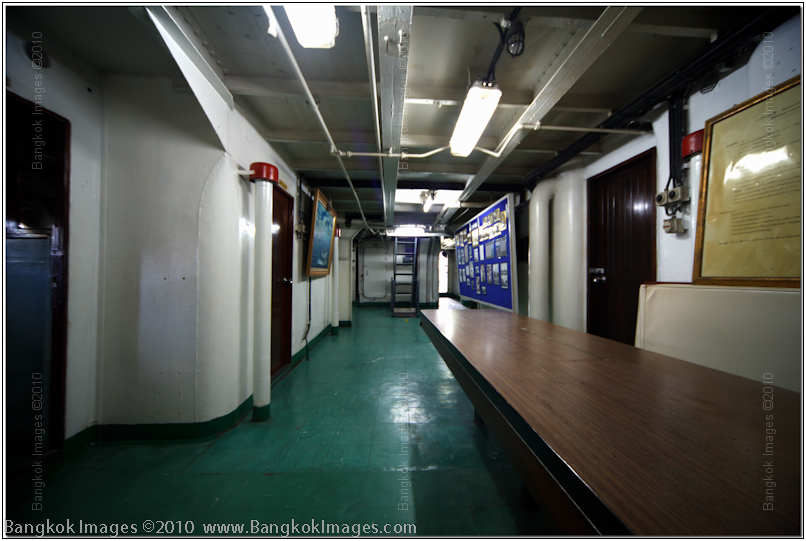
Canon 5d Mark II, Sigma 12-24mm F4 @F5.6 1/13th 12mm ISO 800
Once I could set and brace I could bring the camera down to ISO 800 for a more clear detailed picture of the quarterdeck area.
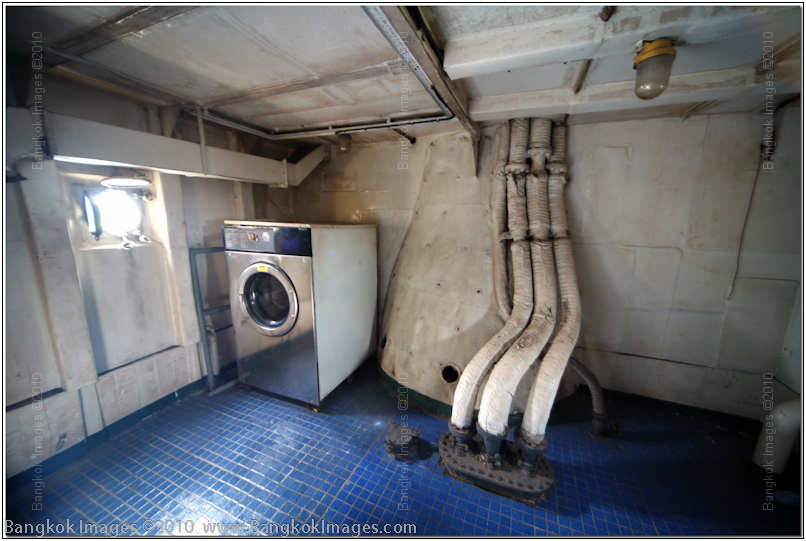
Canon 5d Mark II, Sigma 12-24mm F4 @F5.6 1/5th 16mm ISO 800
One washer for 170 men. I’d guess the enlisted men hand scrubbed their laundry in buckets.
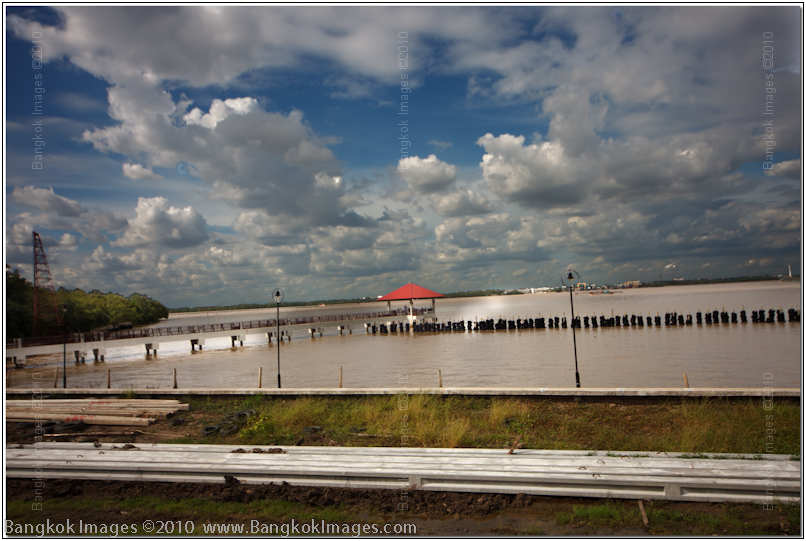
Canon 5d Mark II, Sigma 12-24mm F4 @F5.6 1/80th 24mm ISO 125
It’s hard to find fault with the view. Beautiful skies, calm waters, but it felt strange being on the deck of a ship and seeing grass all around me. It just didn’t feel natural at all!
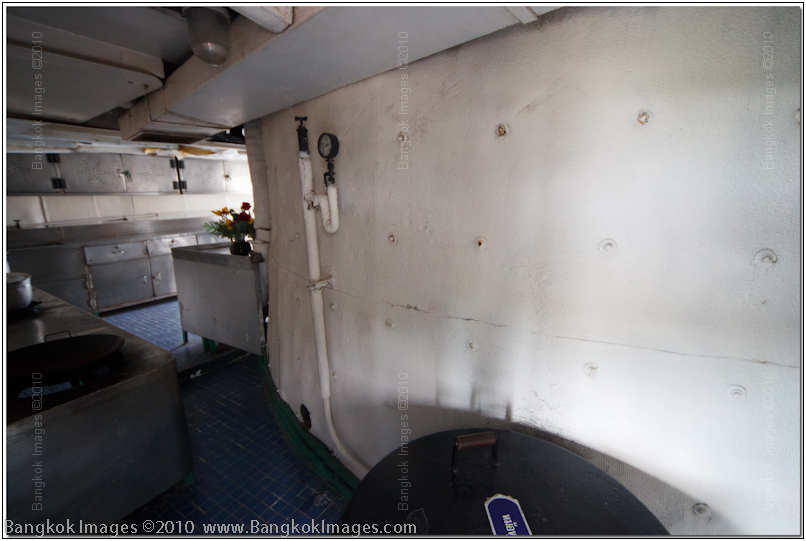
Canon 5d Mark II, Sigma 12-24mm F4 @F5.6 1/80th 12mm ISO 3200
One last look into the gallery.
There was a nice restaurant area where the old vets brought their families for lunch and other small exhibits to share with the family. For sure it’s worth a visit and gives you a glimpse into what SEA forces were forced to ensure in the defense of their countries.
Android 2.2 Froyo Is Here! *menu
Introduction
With great regret I was forced into upgrading my dusty rusty and trusty 5 year old Motorola mobile for a brand spanking new Android Smart Phone. I did a hands-on review of this ‘computer’ some months back andyou can read it here.

When I wrote this review I predicted that Android would soon take over from Apple as the market leader and it was only two weeks later when this happened! It was big news in the industry and pundits in both camps argued over the validity of the study, but now never months later there is no doubt. Android is the clear market leader by virtue of more manufacturers marketing Android phones vs. only Apple marketing Iphones. (if we ignore the Chinese knockoffs) So really, Android is it and for good reason!
My choice was the HTC Desire. It’s a medium size well built and solid Droid, not too big and not too small. It fits in my back pocket just right.

At the time of my review I mentioned we’d soon be getting Android 2.2 codenamed Froyo. The USA and EU got the upgrade just a few weeks later, while it was only last week those of use with Asia model phones got a taste of yogurt. My phone bleeped, it notified me 2.2 was ready for download, I told it okay, and by the time I got to where I was going I was all updated with all my data and Ap’s just as I left them. A perfect seamless upgrade!

Android 2.2 Code-named Froyo
This is not your standard incremental upgrade. Android 2.2 is to Android 2.1 as Windows 7 is to Windows Vista. The code is much lighter and better coded so there are significant performance upgrades. If the phone felt ‘zippy’ before, now it feels downright fast.
Some of the phones that should definitely be getting Froyo 2.2 are the Motorola Droid, Nexus One, HTC Incredible, HTC Evo, HTC Wildfire, and Mytouch 3g. There are others, so if you don’t see yours listed here check with your provider.
Phones that ‘might’ get Froyo include the HTC Eris, HTC Hero, Motorola Backflip, and for sure the T-Mobile G1 and Samsung Behold II won’t be getting Froyo. Again, ask your provider if you’re not sure.
Some phones that don’t have 2.1 might get bumped directly to 2.2, like the Motorola Cliq and Cliq XT. Ask.
What Else Besides Snappy Performance?
Tips Widget: This lets you more easily configure your home screen through dedicated shortcuts.
Exchange Support: More secure password options, Remote Wipe, Calendars, and Auto Discovery for Exchange 2007 and higher. Global address lookup too.
Camera Enhancements: Peek into picture stacks with a zoom gesture, and the LED flashes are now largely supported for the camcorder modes.
Portable Hotspot: I love this one. Your Android 2.2 device can now be turned into a portable WI-FI hotspot for up to 5-8 devices depending on model. This means your 3/4G connection can be shared among a group of computer users using pure wi-fi, no Bluetooth or USB cables needed. I heard there’s an ap that takes a WI-FI connections such as you’d get in a hotel room, and ports that connection through the portable hotspot. The potential savings for a family traveling with several laptops or a company meeting in a hotel would be huge.
Multiple Keyboard Languages: If you’ve had an Asian model being able to switch back and forth between languages was a given, but now we can add Latin based languages as well.
Improved Performance: It feels like someone supercharged my phone! The browser is much faster, memory is handled better, and you get a 2x-5x boost for CPU heavy code with Dalvik JIT.
New Platform Technologies: New media framework supports progressive streaming. A feature you’ll find handy if you’re using the new Android Slingplayer Portable.

I’ve enjoyed watching my cable TV while waiting in line, eating lunch, or whenever I get a bit bored.

Application Storage: You can now designate where your Ap’s will be stored, in the phones memory, or on its mini-SD card.
Cloud storage: Froyo 2.2 now supports cloud to device messaging. This is big if your company supports this.
Camera and Camcorder: A new API doubes the frame rate from 10fps to 20fps. New zoom controls, portrait orientation, access to exposure control, and a thumbnail utility.
Graphics: New API’s for OpenGL ES 2.0. I’m not sure you’ll be playing many intense games with your phone, but maybe some games equal to Playstation Portable are on the way?
Data Backup: New features make data backup easier.
User Interface Framework: You get a new “car mode” and “nightmode” controls which custom tunes your UI to be easier manipulated in dim light.
Summary

As you can see this is much more than your standard upgrade. It’s like I left my house with one phone, and arrived at my destination with a brand new toy! I especially love the wi-fi hotspot, it’s something I use often when traveling in Thailand. I can ‘tether’ my HTC Desire via a USB cable to charge my battery, and use the WI-FI hotspot wireless at the same time to access the internet. Or my phone can stay in my pocket while in the back of a cab, and provide internet access to my laptop while I get some work done on the way to my destination.
Overall I notice my HTC Desire being much faster, more responsive, and the many little menu and access improvements are noticed most every time I use the phone. If you felt Android was not as refined as the IPhone before you might have had a point, but now it’s every bit as refined and offers features the IPhone doesn’t yet offer.
I remain convinced, the Android system, made and supported by Google, with integrated GPS support, Gmail support, and all that Google offers, remains the best smartphone system available. If your occupation chains you to a phone, it might as well be an Android with 2.2 Froyo!
Photography News of Interest *menu
You’ll want to read this! You now need permits in Australia to photograph landmarks. Photographers are
justifiably outraged and you can’t help but wonder where their “free country” has done. They’re following the lead of the UK and even the USA is starting such nonsense. Fear is hurting us more than the enemy
we’re supposed to be afraid of.
Canon develops the worlds largest CMOS sensor which measures 7.95 inches by 8 inches, and can capture 60 FRAMES PER SECOND IN MOONLIGHT! That equates to 1/100th the light sensitivity of the best DSLR out there. Megapixels? Who cares..

Adobe releases the final version of Lightroom 3.2 and Adobe Camera Raw 6.2. You can get the Windows version
of Lightroom here, and theMac version here. The windows version of ACR here, and theMac version here.

Olympus announces its E-P2“Black Edition” For those of you who like black I guess.. Maybe someone
can explain it to me. Read about it at Digital Photography Review.

Olympus announces a M.Zuiko ED 75-300mm which equates to a 150-600mm in 35mm terms. Not bad for such a small lens. Read about it at Digital Photography Review.

Olympus also announces their M.Zuiko Digital ED 40-150mm (80-300mm 35mm equiv) and
it keeps it small! Read about it over on Digital Photography Review.

Now this is one for the ages! One I’ve been waiting for. Carl Zeiss announces a Canon and Nikon mount 35mm F1.4 Distagon T This is a very high quality manual focus fast 35mm lens built for those who truly appreciate well built lenses with superb optics and the advantages they provide. Is it better than Canon’s own 35mm F1.4L USM? I don’t know, but I suspect it might be. I’ll make my choice after a careful comparison.

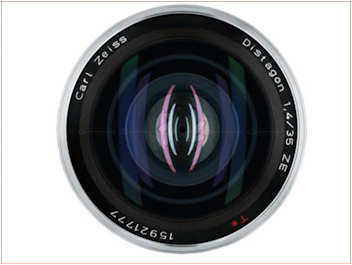
Datacolor announces its focus calibrator. This looks suspiciously like that other such device which has been out there for over a year. It’s designed to help you set your micro adjustment. Do I use these things? No. I use the moire method and it’s free and I think more accurate. Let me know if you want me to write a feature on this method and how you can fine tune your lenses micro adjustments to really increase your lens performance.
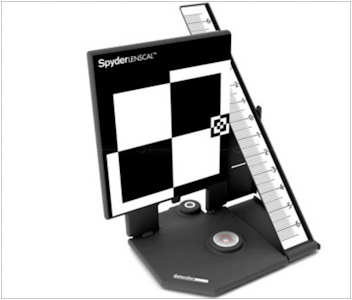
Digital Photography Review updates their review on the Sony SLT-A55. If you were considering one of these cameras you’ll want to read this.
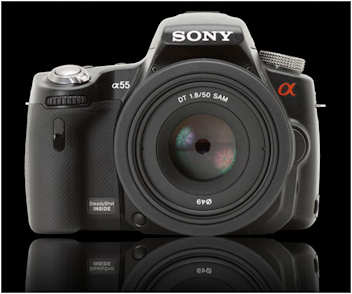
Readers Submissions *menu
Last week I wrote about taking advantage of the weather at locationssuch as the Sanctuary of Truth.
One reader took me up on it and just sent me these six great images he captured the same weekend!
Thank you Peter. It’s my hope your excellent work will inspire others to get out there and try their hand on this great location!






I suspect the readers submissions will be a highly anticipated section of this column and I encourage anyone with photographs and travel accounts they’d like to share to please send them to me at: info@BangkokImages.com
Readers Questions *menu
Ask The Professor gives our forum users a chance to ask JTG about language and cultural issues from
a professional Thai woman’s perspective. Check out the forums and ask any questions you may have. Below are some excerpts from one question this last week:
Hi JTG,
Question for you……hope you can help!
Many times when I'm with the wife and/or her family, whenever I'm eating they always ask "Aroi mai?" But of course it comes out like "Alloy mai"? as they have difficulty pronouncing "r".As I'm sure many others do. Now…..I CAN pronounce "r" quite well….so…..should my reply be "aroi maak!" or "alloy maak!"
Mai lu…er…mai ru…er…oh..what's a man to do?
Hope you can use your years of scholarly activities to help me solve this burning issue!
Kob khun krap.
klap.
Er….khap.
JTG responds:
I'd say do the "r" .. do it the right way..
In the past it used to be only people from the countryside who spoke central dialect with a strong accent. Now sloppy people picked it up and it has become common that a lot of people just opted for the L..
It's my pet peeve that they pronounce Thai that way..
Thai people wouldn't care much when a Thai person pronounce it that way but being a foreigner speaking with the L where it should be an R, people most likely will make an assumption that you've learned your Thai from the wrong crowd.. Ironically we don't think much about Thai people doing the same thing.. Double standard or what..
There’s more on the discussion in the forum in this thread, check it out and add your own two cents worth, I did. ;o)
Please submit your questions to info@BangkokImages.com All questions will be answered and most will show up in the weekly column.
A Snapshot of Bangkok Images Week in Review *menu

This week there was only one workshop, but a ton of activity on our website. This week marks our first week of being independent. This means I’m now maintaining the site 100% myself and we’re on our own new server. The transfer went perfectly. It’s a fairly complex site and much is happening under the hood which isn’t readily apparent, and there’s still a lot of work to be done and finishing touches to apply. This week I’ve put in about 10 hours of learning the system and a few hours on changes, but they’ve been significant changes and there’s more to come. We’ve upgraded our platform software to the latest version, fixed a lot of formatting issues, repaired some broken mail links, and added a few new gallery category pages with some new galleries. You can see the new galleries here:
Two new galleries from Ayutthaya can be found here. The floating market and Wat Rachaburana. Through Matthew’s Eyes shares some of my sons images from this last summer. It’s always fun to see how a 17 year old sees things. Give it a look. Try out the full page view for a really good look at all the images.
Next week, time permitting, we’ll try to upgrade the user and site galleries which will include some really cool new features, and we’ll try to upgrade the blog modules for even more features including embedded videos and thumbnail previews
in the indexes! I say time permitting because I’m planning on taking off Monday morning and heading to Mae Hong Son which is a long journey and I’ll be gone at least 7-10 days. I can’t
promise a full column on the 18th, but I’ll do my best to get something interesting up.
The “What’s New” area of our site continues to grow in popularity. The forums are starting to take off too. We try to update the What’s New page several times a week and provide either an interesting new image or something of interest. Check it out to keep track of Bangkok Images exploits and commentary throughout the week.
Still a ton of hardware and software reviews being formed Please be patient, we have a lot coming and only so much space in the column each week to post it.
d
Infocus Blog, The Beginning And The End *menu
From the book of Revelations, Chapter 1 verse 8, “I am the Alpha and the Omega says the Lord God.” No, I’m not going all religious on you, but sometimes it’s important to understand the genesis of a phrase
or term so we can understand the full impact during discussion. The Alpha and Omega are of course first and last letters of the Greek alphabet, and together form a monogram or symbol for the names of Jesus Christ, meaning the beginning and the
end.
This phrase is important because it tells us Jesus existed before creation. Now would be a great time to segue into photography right? Jesus is to creation, as light is to composition. Light is the beginning and end of everything concerning photography.
Light makes the difference between a great image, or a poor image. The quality of light, the direction of light, the intensity of light, every variable of light works together to provide the finished image. Light is eternal. All you need to do
is study the masters to understand how much I’m understating light, even while trying to hammer it home with the biggest hammer possible. God.

The Sleeping Fish
Our lives have a beginning, and an end. So do most of our relationships. This weekly begins with a feature photograph of significance, and ends with this blog we’re reading right now. Every trip to every destination has a beginning. And an end.
Last week I talked a bit about enjoying the journey. Or rather the importance of the journey in relation to the destination.
Can you tell how important I think really understanding this message is to photography? It’s everything. The beginning and the end. The Alpha and the Omega. Allow me to digress:
How many images have you taken which you feel are perfect, which have not only achieved technical perfection, but have also accurately captured the image in your mind’s eye?

Flight in Motion
I can count the number I’ve taken without borrowing anyone else’s fingers or toes. And I’ve been doing this for a long time. The Alpha and Omega is about a lot more than a pretty picture.. it’s about the perfect timing, the
perfect subject, the perfect everything.. and a pretty picture.
Do you know the best part? You’re the one who gets to say what’s perfect. This is about pleasing you. Photography is about more than pleasing others, perhaps that would be the essence of commercial photography. Someone walks in the studio
and wants a portrait, tells you what they have in mind, and you produce it. It’s not necessary you like it, it’s only necessary they like it. And you get paid. I’m sure there are some out there who truly love their commercial
work, but you have to ask yourself “if they weren’t getting paid for it would they be shooting that person or that product?” Usually the answer is no.
My guess is the alpha and omega is most often obtained by the hobbyist. That would be people like you, those who are reading this column. You’re out there taking pictures and striving to achieve better images because it makes you happy. Because
inside you feel some drive, a motivation, something inside you pushes you towards your composition. Could life be any more perfect than this?
Next week I’m going to feature a fellow photographer who does this purely for fun, for enjoyment, and has traveled the world in pursuit of his “hobby”, yet on a technical basis is as good as most professionals I know.
I think you’ll enjoy his work.
People ask me, what’s the difference between a professional and an amateur. Most would answer off the top of their head “the only difference is one gets paid for it, the other doesn’t.” This is true to some
extent. But there’s much more. Allow me to explain.
An amateur is under no obligation, no stress, to get the picture right. A professional is. A professional needs to have the skills to operate under any conditions and still get the picture right. A professional should have backup gear, an assistant if
necessary, and whatever is necessary to get the perfect picture for their client. An amateur can show up for 15 sunsets and if he/she only has the skill to get a single great sunset, then all is well. If a professional is asked to show up and
capture the perfect sunset on a certain day when the clients schooner is in the background and the moon is setting right over its bow, and that’s the only day of the year this picture is possible, then a professional must have the skills
to make this picture correctly.

Life On The Edge
However, the beginning and the end. This is everything. And even professionals must occasionally allow themselves to chase the elusive beginning and end. By the time you read this I’ll be on the road to Mae Hon Song chasing my alpha and omega.
I’ll be gone 7-10 days and if I’m very fortunate I’ll return with one more of my toes or fingers accounted for. But I’m not promising anything.
Until next time..




